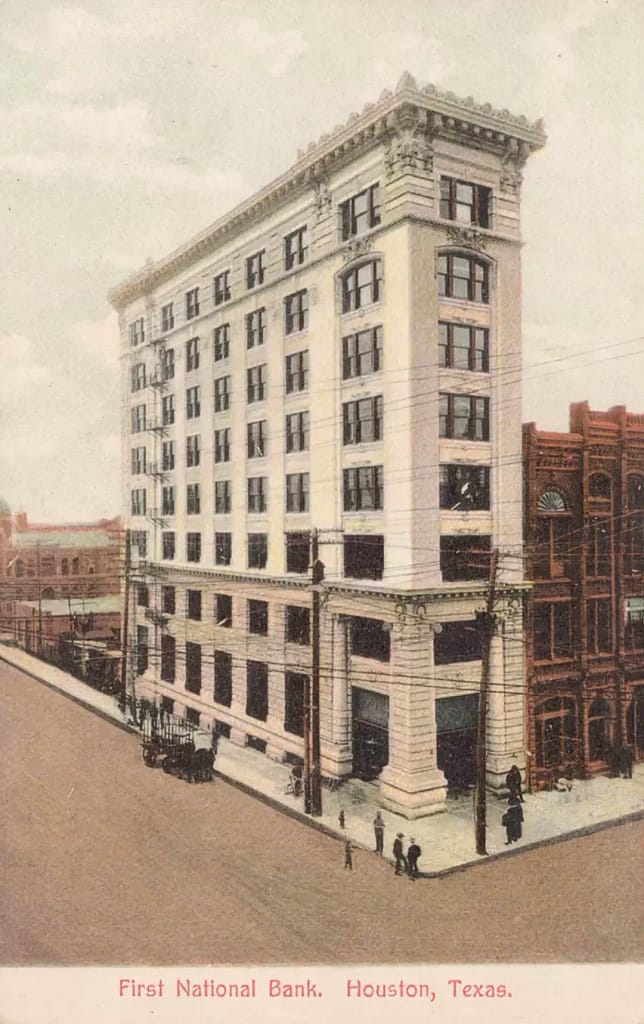Houston’s architectural landscape is as diverse as its population. Over the years, the city has embraced various styles that reflect its dynamic growth and cultural evolution. From modernist skyscrapers to innovative green buildings, architecture plays a pivotal role in shaping the identity of this global city. In this article, we’ll explore how Houston’s architecture has evolved, its influence on the city’s identity, and the trends that continue to shape its skyline.
Houston’s Architectural Beginnings: Early Influences
Houston’s architectural journey began in the late 19th and early 20th centuries, during the city’s oil boom. As the city grew into an industrial and economic hub, its architecture started reflecting the prosperity of the era. Early influences came from neoclassical and art deco styles, which were prominent in public buildings, banks, and other commercial structures. These styles represented power, stability, and progress—values that resonated with Houston’s economic ambitions.

Key Examples of Early Architecture in Houston
- The 1910 Harris County Courthouse: With its neoclassical design, the courthouse stands as a symbol of the city’s early architectural aspirations.
- Esperson Buildings: A remarkable example of Italian Renaissance-style architecture, completed in 1927.
These early buildings laid the foundation for Houston’s more modern architectural experiments that followed in the mid-20th century.
The Rise of Modernism in Houston’s Architecture
The mid-20th century saw Houston emerge as a center for modernist architecture. The city’s rapid urbanization and economic expansion during the post-war years encouraged architects to experiment with new forms and materials, particularly steel, glass, and concrete. Modernism, with its clean lines, minimalism, and functionality, perfectly fit Houston’s growing business districts and urban landscape.

Houston’s Iconic Modernist Landmarks
- Pennzoil Place: Designed by Philip Johnson in 1976, Pennzoil Place became a signature example of modernist architecture with its innovative twin trapezoidal towers.
- The Williams Tower: Completed in 1983, the 64-story Williams Tower became a defining part of Houston’s skyline and an emblem of post-modernist influence.
The shift towards modernism reflected Houston’s ambitions to become a city of the future, embracing progress and innovation.

Postmodernism and the Shift Towards Cultural Identity
By the 1980s and 1990s, postmodernism began to influence Houston’s architectural landscape. This style, in contrast to the minimalism of modernism, embraced bold colors, historical references, and playful design elements. Architects working in Houston during this era sought to create buildings that were not only functional but also reflected the city’s cultural diversity and rich history.
Examples of Postmodern Influence in Houston
- The Menil Collection: Designed by Renzo Piano in 1987, this museum exemplifies postmodern principles by using natural light and blending of indoor and outdoor spaces.
- Bank of America Center: Known for its dramatic, stepped pyramidal top, this skyscraper blends modernism with traditional architectural motifs, symbolizing Houston’s transition into postmodernism.
The emergence of postmodernism allowed Houston to explore its identity beyond commerce and industry, incorporating elements that reflected its growing arts and cultural scenes.

Contemporary Architecture: Sustainability and Innovation
In recent years, Houston has embraced a new wave of architectural innovation, with a focus on sustainability and environmental responsibility. As the city continues to expand, architects are designing structures that reflect the global movement towards greener, more sustainable urban environments.
Noteworthy Sustainable Buildings in Houston
- The LEED-certified BP Plaza: This eco-friendly office building is a prime example of Houston’s commitment to sustainable architecture, with its energy-efficient systems and green spaces.
- The McGovern Centennial Gardens: Completed in 2015, this 15-acre park combines contemporary landscape design with sustainable architecture, offering a public space that reflects Houston’s evolving relationship with nature.
Houston’s push towards green architecture symbolizes a shift in identity, where the city not only strives for economic growth but also aims to be at the forefront of environmentally conscious design.
Architecture as a Reflection of Houston’s Identity
Architecture is more than just buildings – it is a reflection of the values, aspirations, and identity of a city. In Houston’s case, its architecture tells a story of ambition, growth, and transformation. From the classical influences of its early years to the modernist and postmodernist structures that define its skyline today, Houston’s architectural landscape is a testament to its evolving identity.

How Houston’s Architecture Shapes Its Identity
- Cultural Diversity: Houston’s architecture reflects its diverse population, with buildings that blend international influences with local culture.
- Economic Growth: The city’s skyscrapers and business districts stand as symbols of Houston’s role as a global economic powerhouse.
- Innovation: Houston’s architectural innovations, from modernist experiments to sustainable designs, showcase its commitment to progress and environmental responsibility.
As Houston continues to grow, its architecture will undoubtedly evolve, reflecting the changing needs and values of its residents.
Future Trends in Houston Architecture
Looking ahead, the future of architecture in Houston is likely to be shaped by several key trends, including:
- Increased Sustainability: As climate change becomes a growing concern, architects will prioritize energy-efficient designs and green technologies.
- Smart Cities: The integration of technology into urban planning will lead to smarter, more connected buildings that improve the quality of life for residents.
- Cultural Landmarks: Houston’s commitment to the arts and culture will likely inspire new architectural landmarks that reflect the city’s unique identity.
Architecture as a Living Legacy
Houston’s architecture is more than just a collection of buildings – it’s a living legacy that continues to shape the city’s identity. From the neoclassical structures of its early years to the modernist and postmodern icons that define its skyline, Houston’s architectural journey is a reflection of its past, present, and future. As the city continues to evolve, its architecture will remain a key part of its identity, representing both its ambitions and its unique character.